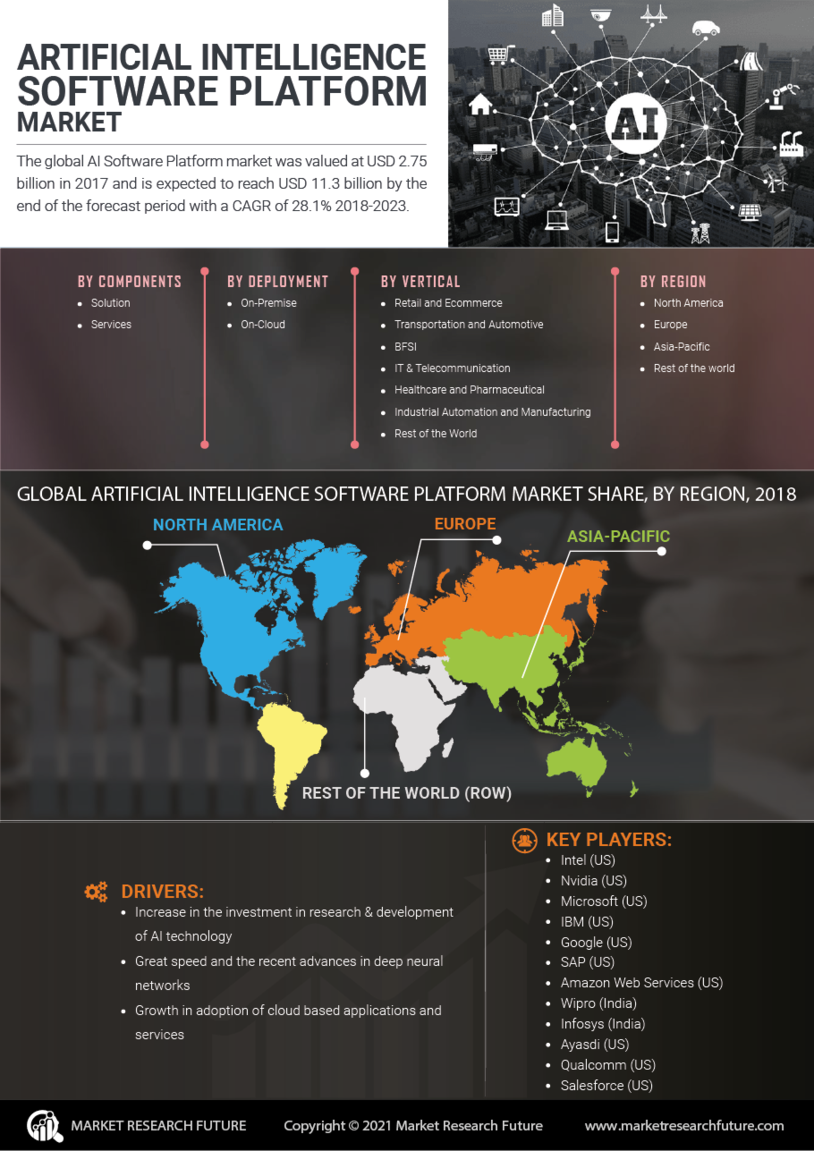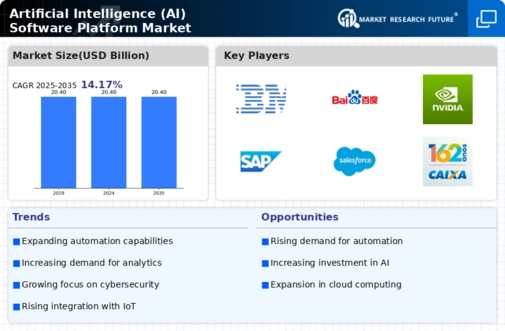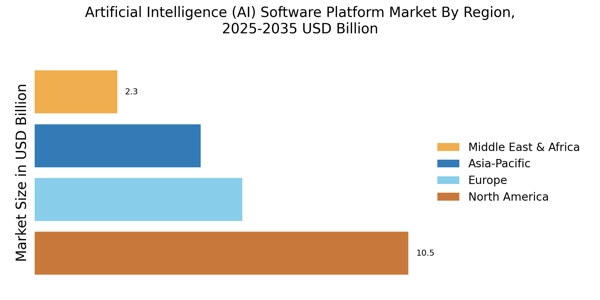Rising Demand for Automation
The Artificial Intelligence (AI) Software Platform Market is experiencing a notable surge in demand for automation across various sectors. Organizations are increasingly adopting AI solutions to streamline operations, enhance productivity, and reduce operational costs. According to recent data, the automation market is projected to grow significantly, with AI-driven platforms playing a pivotal role in this transformation. Businesses are leveraging AI to automate repetitive tasks, allowing human resources to focus on more strategic initiatives. This shift not only improves efficiency but also fosters innovation, as companies can allocate resources to research and development. The growing recognition of AI's potential to drive automation is likely to propel the AI Software Platform Market further, as more enterprises seek to integrate these technologies into their workflows.
Expansion of AI in Healthcare
The Artificial Intelligence (AI) Software Platform Market is significantly impacted by the expansion of AI applications in healthcare. The healthcare sector is increasingly adopting AI technologies to improve patient outcomes, streamline operations, and enhance diagnostic accuracy. AI software platforms are being utilized for predictive analytics, personalized medicine, and operational efficiency. Recent reports suggest that the healthcare AI market is poised for substantial growth, driven by the need for innovative solutions to address complex healthcare challenges. As healthcare providers recognize the potential of AI to transform patient care and operational processes, the demand for specialized AI software platforms is likely to increase, further propelling the growth of the AI Software Platform Market.
Growing Need for Enhanced Data Security
The Artificial Intelligence (AI) Software Platform Market is increasingly shaped by the growing need for enhanced data security. As organizations adopt AI technologies, concerns regarding data privacy and security have become paramount. AI software platforms are being developed with advanced security features to protect sensitive information from cyber threats. The rise in data breaches and cyberattacks has prompted businesses to seek AI solutions that not only optimize operations but also safeguard their data. This trend is likely to drive the demand for AI platforms that incorporate robust security measures, ensuring compliance with regulations and building trust with customers. The emphasis on data security is expected to be a key driver in the evolution of the AI Software Platform Market.
Advancements in Machine Learning Technologies
The Artificial Intelligence (AI) Software Platform Market is significantly influenced by rapid advancements in machine learning technologies. These innovations are enabling platforms to process vast amounts of data with unprecedented accuracy and speed. As machine learning algorithms evolve, they become more adept at identifying patterns and making predictions, which is crucial for businesses seeking to harness data-driven insights. The market for machine learning is expected to expand, with estimates suggesting a compound annual growth rate that reflects the increasing reliance on AI solutions. This growth is indicative of a broader trend where organizations are prioritizing data analytics and machine learning capabilities, thereby driving demand for sophisticated AI software platforms that can support these functionalities.
Increased Investment in AI Research and Development
The Artificial Intelligence (AI) Software Platform Market is witnessing a substantial increase in investment directed towards AI research and development. Governments and private entities are recognizing the strategic importance of AI technologies and are allocating significant resources to foster innovation. This influx of funding is likely to accelerate the development of new AI applications and enhance existing platforms. Recent statistics indicate that investment in AI startups has reached unprecedented levels, reflecting a robust interest in the potential of AI to transform industries. As more capital flows into AI research, the capabilities of software platforms are expected to expand, offering businesses more advanced tools to leverage AI in their operations.


















Leave a Comment